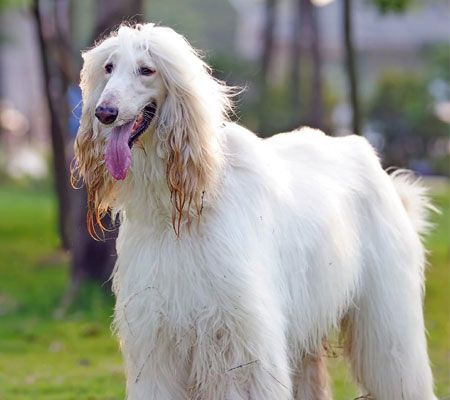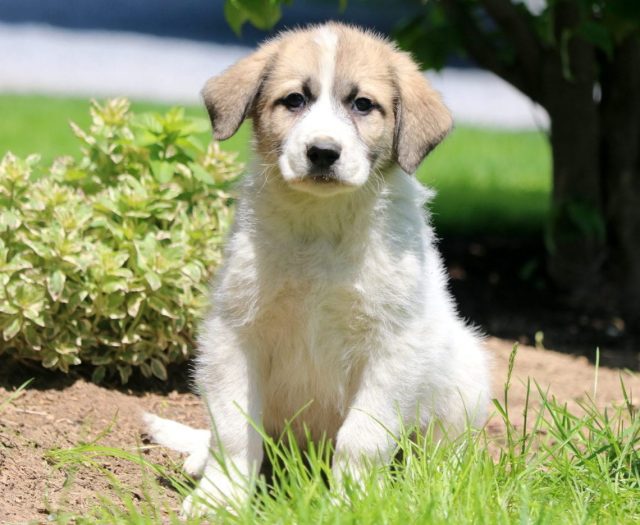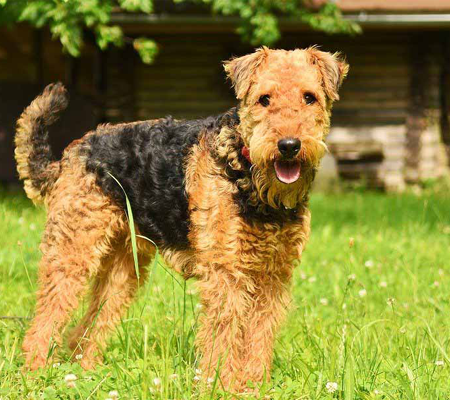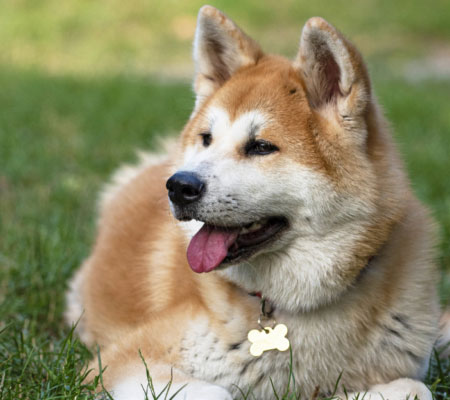The Romanian Carpathian Shepherd dog is a natural
guardian, brave and faithful, known for its unconditional love and dedication
to the entire family, or the herd it guards, as well as to its master. The
Carpathian is a noble, confident, peaceful, and well-balanced dog.
The Romanian Carpathian Shepherds are strong
guards, courageous, clever, loyal, and proud dogs that are also highly playful
and completely dedicated to their family and master - they will listen to
everyone in the family, but only one person will be their final master. The
Carpathians are huge, double-coated canines with wolf-like grey coats that are
extremely agile and muscular.
They are highly efficient working dogs that have
evolved to guard and protect herds and flocks from the large numbers of grey
wolves, brown bears, and other predators that live in Romania's Carpathian
Mountains, with the dogs playing an important role in maintaining a balanced,
natural habitat between humans, domesticated animals, and wild predators in the
area.
Most Carpathian Shepherds still work in the
Romanian highlands today, doing the same duties that they were chosen for
hundreds of years ago, and when they're not, they're faithful friends and alert
protectors of houses and families.The Carpathians are enormous and muscular,
standing up to 30 inches at the shoulder and weighing more than 100 pounds.
They are commonly referred to as noble dogs because of their haughty and
dignified grace. These fearsome guardians are normally calm and balanced,
looking disinterested at times to save their energy for the genuine threat.
They will spring into action at the correct time and move with surprising
agility, speed, and tenacity to confront a threat.
Carpathian Shepherd Dog Highlights
Breed Size
Large
Nature
Gentle, Friendly, Playful, Outgoing, Willful
Energy Level
Active
Intelligence
High
Barking Level
When Necessary
Coat Length
Short
Breed Group
Working
Droll Amount
Low
Good with
Familes, Children, Dog
Feed Level
Medium, High
Colour Type
Wolf gray
Other Facts
Easy to train, easy to groom, easy to go for walk, easy to kept at home, loyal for their owners.
Dog History
The Carpathian Shepherd's origins are unknown,
but we do know that for hundreds of years, these huge dogs have guarded the
houses and cattle of farmers in some of Europe's roughest and least developed
highlands. Even today, the Carpathian mountains' woods house huge and powerful
predators such as eagles, wolves, and bears, which the Carpathian Shepherd
efficiently defends against. While a solitary Carpathian Shepherd is a
dangerous animal, these flock protectors are usually seen in groups and will
summon the rest of the pack if a threat is detected.
The Carpathian Shepherd is more sociable and
cooperative with other dogs as a result of this feature than many flock
guarding breeds. Some scientists believe the Carpathian Shepherd has received
frequent injections of wolf DNA, and given their look, closeness to the
Carpathian Wolf, and natural desire to cooperate in groups, this theory has
some credibility. However, beasts were not the only predators in the Carpathian
highlands, and these dogs were brought inside at night to protect the family
and the home from thieves and robbers, resulting in a breed that is softer and
more affectionate toward its human family than many other flock guardian
breeds.
After Romania gained independence from the
Ottoman Empire in the mid-nineteenth century, native Romanian dog breeds began
to be popularised and standardised, and a breed standard for the Carpathian
Shepherd was drawn up in 1834 and published by the National Zoological
Institute, and the breed was recognised by the Federation Cynologique
Internationale in 2003 and the United Kennel Club in 2006, but not by the
American Kennel Club.
22-27 inch 28-39 kg 10-13 year
Height

Weight

Life Span
Health and Care
By nature, the Carpathian Shepherd Dog is a
relatively healthy breed with a lifetime of up to 15 years. Nonetheless, all
dogs are susceptible to some health issues. Hip dysplasia, elbow dysplasia,
bloat, eye difficulties, and arthritis are the most frequent health issues in
this breed.
The shepherd dogs of the Carpathians are
typically healthy. However, they, like many other dog breeds, are prone to
specific health issues.
Arthritis, bloating, elbow dysplasia, vision
difficulties, and hip dysplasia are among their most prevalent health issues.
Always strive to remain in touch with a local veterinarian.
Care
Carpathian Shepherd dogs require a lot of
attention when they are being raised. They require at least one hour of steady
and appropriate exercise every day.
A large, gated garden that they can patrol would
be beneficial to them. While they have the potential to go large places, they
are more likely to stay close to home and family. It is indeed essential to
make sure their garden is safe because they're known for being potential escape
artists.
When a dog is not properly exercised, it is
normal for undesired behaviours to emerge. Because of its size and natural
desire to walk and explore, this dog should not be kept in a tiny apartment or
house. This is a dog who enjoys being outside and would not be content sitting
on a sofa all day.
Dog Breed Care Tips and
Important Instructions
The cost of rearing a carpathian shepherd dog may
range from $420 to $780 per year, including everything from food and treats to vet
expenses, toys, and a licence. This is before you include in the fees of
sterilisation, a collar and leash, a dog carrier, and a dog cage. Before
bringing your carpathian shepherd dog home, make sure you have all of the
required supplies.
Shepherd of the Carpathians Dogs require physical
activity to keep healthy, engage their wits, and maintain their health. Daily
exercise also aids carpathian shepherd dogs in avoiding boredom, which can lead
to undesirable behaviour. Many of your carpathian shepherd dog's inherent needs
to herd, dig, chase, retrieve, and chew may be satisfied by playing outside.
Your carpathian shepherd dog's activity requirements may vary depending on his
or her health and age, but ten minutes outside and a couple of daily walks
around the block are unlikely to suffice. If your carpathian shepherd dog is an
adolescent between the ages of six and eighteen months, her needs will be
higher.
Brushing your carpathian shepherd dog will help
minimise shedding and keep him clean. During the summer or other warm weather,
check for fleas and ticks on a daily basis. The majority of Carpathian shepherd
dogs only need to be washed a few times a year. Comb or clip out all mats from
the carpathian shepherd dog's coat before bathing. If you don't rinse all of
the soap out of the coat, dirt will attach to it.
Puppies are unquestionably the simplest to
handle. Carry your carpathian shepherd dog pup by placing one hand beneath his
or her breast and supporting his or her hind legs and rear with your forearm or
other hand. Never attempt to raise or grasp your dog by his forelegs, neck, or
tail. If you must pick up a bigger, mature carpathian shepherd dog, do so from
the underbelly, holding the chest with one arm and the rump with the other.
Feeding
- Shepherd of the Carpathians Puppies from eight to
twelve weeks require four meals every day.
- Feed three meals every twenty-four hours to
carpathian shepherd dog puppies aged three to six months.
- Puppies from six months to one year should be fed
two meals every day.
- When your carpathian shepherd dog reaches her
first birthday, she just need one feeding every day.
- Two smaller portions may be plenty for certain
Carpathian shepherd dogs. It's up to you to figure out what your Carpathian
shepherd dog likes to eat.
Premium-quality dry food can be blended with
water, broth, or canned food to provide balanced nourishment to mature
carpathian shepherd dogs. Cooked eggs, fruits and vegetables, and cottage
cheese may be enjoyed by your carpathian shepherd dog, but they should not
account for more than 10% of his daily meal allotment. Puppies of Carpathian
Shepherd Dogs should be fed high-quality, name-brand puppy food. However, you
should limit "table food" since it can develop mineral and vitamin
shortages, dental and bone problems, as well as finicky eating habits and
obesity. Give only fresh, potable water, and be sure to wash food and water
dishes on a regular basis.
Fun Facts
- The Carpathian Shepherd dogs resemble the other
Romanian canines in appearance. They are powerful dogs with wolf-like
characteristics. They are classified as a breed of medium-to-large size.
- Carpathian Shepherd dogs have a small head and a
snout that is about the same length as their skull. Their eyes should be
almond-shaped and dark brown. Their triangular ears drop down towards their
cheeks.
- They have a rectangular shape with a long back
that should be longer than their height. When upright, their brushy tail is
slightly curled and should never lie over their body.
- The double coat of the Carpathian Shepherd dogs
is made up of a soft, thick inner coat and a coarse outside coat with wolf-like
hues (grey or fawn). In the show ring, white markings are discouraged, although
they are permissible.
- Males' average body height at the withers is
between 26 and 29 inches, while girls' average body height is between 23 and 26
inches. Males' average live body weight is between 35 and 50 kg, while females'
average live body weight is between 32 and 45 kg.
Home Training Tips and General
Information
Only a single person should be responsible for
teaching your Carpathian Shepherd Dog at first in order to avoid the Carpathian
Shepherd Dog becoming hesitant and so that they may begin to learn orders fast.
When too many persons try to teach the Carpathian Shepherd Dog at the same
time, progress might be slowed.
Positive reinforcement and feedback must be used
by trainers. When the Carpathian Shepherd Dog performs admirably, he should be
rewarded so that he knows what he accomplished was appreciated. Don't scold a
Carpathian Shepherd Dog if he doesn't obey your orders. Carpathian Shepherd
Dogs are not as intellectual as humans and learn at a slower pace. What you
must realise is that a Carpathian Shepherd Dog may not quickly obey your
directions during the initial training; breaking in your Carpathian Shepherd
Dog requires repeated efforts. Do not overwork the Carpathian Shepherd Dog
since he may acquire anxiety, which will impede his ability to learn and desire
to be trained. You may encourage a Carpathian Shepherd Dog by giving them
goodies.
One lesson at a time should be taught. Make an
effort to teach him one thing after another. If he is unable to keep it, try to
stick with one command solely, as adding new commands may confuse the
Carpathian Shepherd Dog. Maintain a focus on the essentials.
Simply keep your voice upbeat when issuing
directions, and the Carpathian Shepherd Dog will gladly obey them. A gentle,
coaxing tone elicits a response from Carpathian Shepherd Dogs. He may become
unresponsive and alarmed if you yell loudly.
Train your Carpathian Shepherd Dog in a variety
of situations. If you keep a Carpathian Shepherd Dog in one area, such as your
home, he may find it difficult to adapt to a new setting with new people. Take
him to the dog park or for a walk around the block. This will allow your
Carpathian Shepherd Dog to become more used to other people and breeds.
FAQS
|
How much activity does a shepherd dog from the Carpathian Mountains
require? |
|
This enormous dog need frequent and enough exercise, at a minimum of one
hour each day. A large, gated garden that they can patrol would be beneficial
to them. While they have the potential to go large places, they are more
likely to stay close to home and family. |
|
Is it possible to keep Romanian shepherd dogs as pets? |
|
As a result, this breed is best suited to experienced dog owners. The
Romanian Mioritic Shepherd Dog makes a fantastic family friend when properly
taught and socialised, yet he will always be a touch aloof and wary around
strangers. |
|
Are shepherds from the Carpathians excellent pets? |
|
While they are devoted and loyal to their family, they have a habit of
being courteous but reserved among strangers. Interactions with small
children and dogs should always be thoroughly monitored and socialised.
Shepherds from the Carpathian Mountains are noted for their patience with
youngsters. |
|
What is the number of various shepherd breeds? |
|
Shepherd dogs, also known as sheepdogs, come in a variety of forms and
sizes, with around 30 distinct breeds. Some, like the Corgi, appear unfit for
the task yet perform well. |
|
What is the level of aggression among Caucasian shepherds? |
|
Is it true that Caucasian shepherds are aggressive? When they feel a
threat, the very protective character of Caucasian shepherds can turn
aggressive. Although training and socialisation are essential for this breed,
their protective nature can be tough to overcome. |
Carpathian Shepherd Dog Unique Name
| Male Name | Female Name |
|---|---|
| Bo | Athena |
| Buck | Blondie |
| Chance | Brandy |
| Chico | Casey |
| Chip | Gia |
| Clifford | Inez |
| Coco | Jada |
| Diesel | Jade |
| Felix | Koko |
| Finn | Luna |
| Goose | Moxie |
| Harvey | Nell |
| Max | Olive |
| Rambo | Paris |
| Rocky | Poppy |
| Scooby | Shadow |
| Snoopy | Sugar |
| Tripp | Bridgett |
| Yukon | Kasey |
| Oscar | Kiwi |





